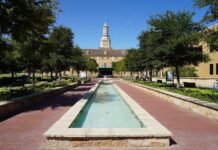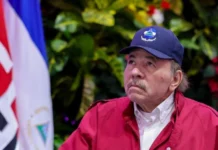Director/Producer Isaac Artenstein [A day without a Mexican/ Break of Dawn] grew up as a child of the border and likes to tell stories from both perspectives, and show how multi-cultural this region is. For example, after years of people asking him where he was from and not understanding that people with the last name, Artenstein, could be Mexican, he decided to make a documentary on the Jews of Tijuana. He started by interviewing his own family and went on to interview other families and individuals who were all part of Tijuana’s history. The documentary “Tijuana Jews” came out in 2005 and was well received on both sides of the border. It was shown at many Jewish film festivals.
Artenstein feels that the Jews of the Southwest have an untold story as the narrative has been mostly about the Anglo westward expansion; whereas, other immigrants are also part of the history. To that end, he is working on a four part series of documentaries on “Frontier Jews” which covers Jews of the Southwest, including New Mexico, San Diego, Arizona [Tucson], and El Paso. The documentary on New Mexico, “Challah Rising in the Desert” has just been completed and the one on San Diego, “To the Ends of the Earth” is near completion.
Artenstein was born in San Diego and grew up both in San Diego and Tijuana, where his father owned stores. He went to high school in Chula Vista. Fluent in both English and Spanish, he moves comfortably between both worlds. From a young age, he loved painting. This love of art led to photography and later filmmaking. He studied painting and photography at UCLA and filmmaking at the California Institute of the Arts where he got his degree. He uses his artistic eye as a filmmaker.
After Tijuana Jews was shown at the Tucson film festival, he was given a book, “Pioneer Jews” which piqued his interest in learning more and revealing a little known story. He spent the next ten years fundraising to accomplish his goal. “As I traveled and interviewed people in Tucson, El Paso, and New Mexico, I realized that the stories were very similar to those of the pioneer Jews in San Diego whose lives were centered in Old Town. At the same time, each place had something unique”.
Artenstein also has a methodical side to go along with his creative one. In preparing for each documentary, he likes to interview a wide array of people to find a dramatic structure and a theme. Although he is making a documentary, he feels it is still storytelling. He knows that the visual, lighting, mood, and music are important for each documentary, so he surrounds himself with talented people. His director of photography is Sergio Ulloa. His co- composers are Jaime Valle and Alan Phillips. They composed very different music for each documentary.
The first documentary in the series, “Challah Rising in the Desert”, explores the history of the Jews in New Mexico. The braided challah [ a Jewish bread] represents the five strands or waves of settlements that have come, including the “converso” Jews escaping the Spanish inquisition 400 hundred years ago, the German Jewish pioneers of the Santa Fe trail in the 1800’s, the scientists who came in the 1940’s to Los Alamos, the counterculture youth of the 1960’s, and the Jews of today. It also shows the special influence New Mexico has had on its Jewish community. Only there will you find bakers who mix green chilis into the challah dough, producing a hybrid and delicious bread.
San Diego’s, “To the Ends of the Earth” came about from a collaboration between Artenstein and Bill Lawrence, the Executive Director of the San Diego History Center. They worked together on the exhibit, “The History and Heritage of San Diego’s Jewish Community”, which is running until May 2018. Artenstein was commissioned to produce a series of standalone video capsules for the exhibit. He interviewed various people in the community. Although the videos are separate, this collaboration was the catalyst for the documentary. Artenstein shot the capsules concurrently while shooting the documentary.
While doing research, he was particularly intrigued when he discovered and read a detailed diary by a teenager, Victoria Jacobs, who lived in Old Town. She wrote of her daily life. At that time, Jews were well integrated in the fabric and society of San Diego. There was even an alley parallel with San Diego Ave. and Juan St. called “El Callejon de los Judios” or “The Alley of the Jews”.
However, after the railroad was built and more Anglos arrived in San Diego, the climate towards the Jews began to change. The insiders became the outsiders. By the 1940’s and 1950’s, there were restrictive covenants in certain areas of town where Blacks, Mexicans, and Jews were not allowed to live. La Jolla was one of them. Although these covenants were illegal, they still existed. This changed with the opening of UCSD in 1960. The head of Scripps Institute of Oceanography, Roger Revelle, served as the spokesperson for the UC Board of Regents. He made it clear that if UCSD was going to open in La Jolla, he wanted all the professors to be able to live nearby.
The 1960’s and UCSD brought in a new renaissance of influential Jews to San Diego. This renaissance was scientific, entrepreneurial, and cultural.
Artenstein interviewed diverse people for the documentary, including Jewish Historian, Joellyn Zollman. He learned from Zollman that 20% of the Jewish community in San Diego is foreign born. There are Jews from Mexico, South Africa, Israel, and Russia.
Challah Rising in the Desert will go to general distribution in September. To the Ends of the Earth will be completed by the end of the summer, and Artenstein plans to submit it to the next San Diego Jewish Film Festival. His goal is to complete all four documentaries or Frontier Jews by the end of 2018.
Pictures are courtesy of Cinewest Productions.
Reprinted with Permission of La Prensa San Diego


























